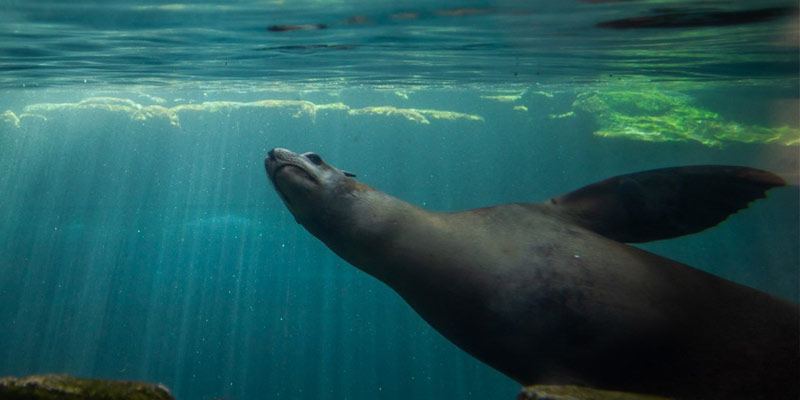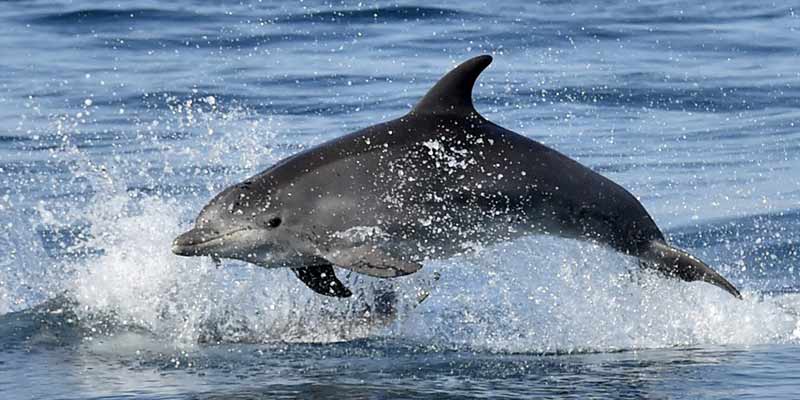- World
- Jun 10
How noise pollution wreaks havoc on marine wildlife
• The Convention on the Conservation of Migratory Species of Wild Animals (CMS) has released a report aimed at addressing a major threat to marine species — noise pollution.
• The report focuses on three major sources of noise pollution: shipping, seismic airgun surveys (used in oil and gas exploration) and pile driving (used for offshore wind farms and other marine infrastructure).
• Marine wildlife – including both migratory species and their prey – rely on sound for vital life functions, including communication, prey and predator detection, and orientation. But our oceans have become increasingly noisy, resulting in significant harm to marine species.
• Noise pollution is known to cause significant disturbance to marine wildlife, including migratory species protected under CMS such as whales and dolphins (and their prey). Such impacts can result in adverse changes to entire marine ecosystem.
• Animals exposed to elevated or prolonged anthropogenic noise can suffer direct injury and temporary or permanent auditory threshold shifts, compromising their communication and ability to detect threats and find food, sometimes leading to death.
• Anthropogenic noise can displace wild animals from critical habitats, including from their migration routes, and mask important natural sounds, such as the call of a mate.
What is CMS?
• The Convention on the Conservation of Migratory Species of Wild Animals (CMS), also known as the Bonn Convention, is an environmental treaty of the United Nations that provides a global platform for the conservation and sustainable use of terrestrial, aquatic and avian migratory animals and their habitats.
• The negotiations to conclude the treaty were held in Bad Godesberg, a suburb of Bonn, Germany in June 1979.
• The Convention entered into force on November 1, 1983 having secured the requisite number of ratifications and in November 1984 the first secretariat was established in premises provided by the German government.
• Since the Convention’s entry into force in 1979, its membership has grown steadily to include 133 Parties from Africa, Central and South America, Asia, Europe and Oceania.
• India has been a Party to the CMS since 1983.
• The Conference of Parties (COP) is the decision-making organ of this Convention. It meets at three-yearly intervals.
• The 14th Meeting of the Conference of the Parties (COP14) will be hosted by Uzbekistan in Samarkand from October 23 to 28, 2023.
The Convention has two Appendices.
Appendix I – Endangered migratory species
Appendix I comprises migratory species that have been assessed as being in danger of extinction throughout all or a significant portion of their range. The Conference of the Parties has further interpreted the term “endangered” as meaning “facing a very high risk of extinction in the wild in the near future”.
Appendix II - Migratory species conserved through Agreements
Appendix II covers migratory species that have an unfavourable conservation status and that require international agreements for their conservation and management, as well as those that have a conservation status which would significantly benefit from the international cooperation that could be achieved by an international agreement. The Convention encourages the Range States to species listed on Appendix II to conclude global or regional Agreements for the conservation and management of individual species or groups of related species. In this respect, CMS acts as a framework convention from which separate instruments evolve.
Noise pollution: a hidden threat to marine wildlife
• From the smallest plankton to the largest whales, noise pollution disrupts the harmonious underwater symphony that marine species create and rely on for survival. Noise pollution is not only detrimental to the health and disruptive to the natural behaviour of marine species, but it can also impact their critical life processes such as reproduction and feeding.
• While much of the research on the impact of marine noise focuses on cetaceans (whales, dolphins and porpoises), a wide range of other species including the polar bear, sirenians (the Dugong and manatees), pinnipeds (seals, sea lions and walrus), marine turtles, marine otters, fish, crustaceans and cephalopods are known to be affected by human-made noise.
• With the intensification of human activities in the ocean, underwater noise pollution is escalating at an alarming rate. A recent study showed that shipping has led to a 32-fold increase in low-frequency noise along major shipping routes in the past 50 years.
• Unchecked noise pollution is not only a major threat for marine wildlife, but can also have grave implications for human livelihoods, notably through impacts on fisheries. Millions of people across the globe depend on oceans for their sustenance and economic survival. Failure to address this issue could have devastating effects on the marine food chain and, subsequently, on fisheries and human communities reliant on these resources.
Solutions to mitigate three important sources of noise pollution
The report highlights the application of quieting technologies that reduce sound at the source as the most effective way to reduce the negative impacts of underwater noise on marine wildlife. These quieting methods and practices may also have additional benefits, such as reducing greenhouse gas emissions and contributing to the mitigation of climate change – another major threat to marine wildlife.
1) For the shipping industry, the application of Best Available Techniques/Technologies (BAT) and Best Environmental Practice (BEP) includes alterations in ship design and propeller technology, and improving operating conditions. Reducing the speed of container and cargo ships, known as slow steaming, not only lowers the acoustic footprint but also reduces fuel consumption and CO2 emissions. Ships typically burn less fuel at lower speeds, which also helps to reduce costs for ship operators. Quieting the noisiest 10-15 per cent of ships would be particularly effective as they contribute disproportionately to overall shipping noise.
2) As an alternative to Seismic airgun surveys, which pose significant threats to marine life (primarily due to the loud, intense noises produced by airguns), the report highlights the need for quieter alternatives like Marine Vibroseis, a technology designed to produce controlled, lower-frequency seismic signals. This could be much more effective as well as environmentally friendly. It also outlines rigorous mitigation measures that should be adopted if these alternatives cannot be employed.
3) As for pile driving, numerous quieting technologies and noise abatement systems are now available, many of which have been developed in recent years due to action-forcing standards and noise limits set by regulators such as the German government.
A number of important decisions and resolutions passed by countries under international treaties – such as the Convention on the Conservation of Migratory Species of Wild Animals (CMS) and the Convention on Biological Diversity (CBD) – call for and encourage the use of the Best Available Techniques/Technologies (BAT) and Best Environmental Practice (BEP).
Regional conventions like the Convention for the Protection of the Marine Environment of the North-East Atlantic (OSPAR Convention) and the Convention on the Protection of the Marine Environment of the Baltic Sea Area (Helsinki Convention) also advocate for the implementation of BAT and BEP – along with agreements targeting specific species like the Agreement on the Conservation of Cetaceans in the Black Sea, Mediterranean Sea and Contiguous Atlantic Area (ACCOBAMS) and the Agreement on the Conservation of Small Cetaceans of the Baltic, North East Atlantic, Irish and North Seas (ASCOBANS).
Manorama Yearbook app is now available on Google Play Store and iOS App Store


